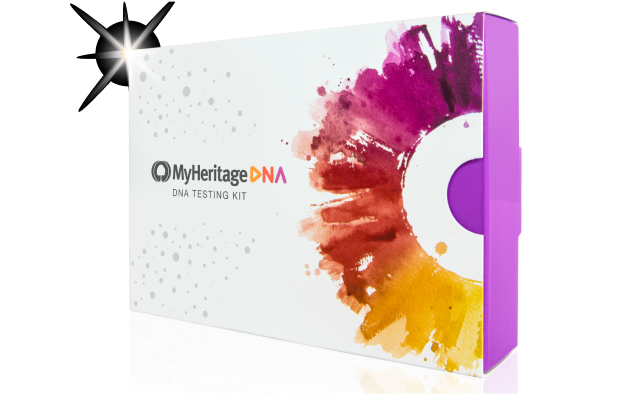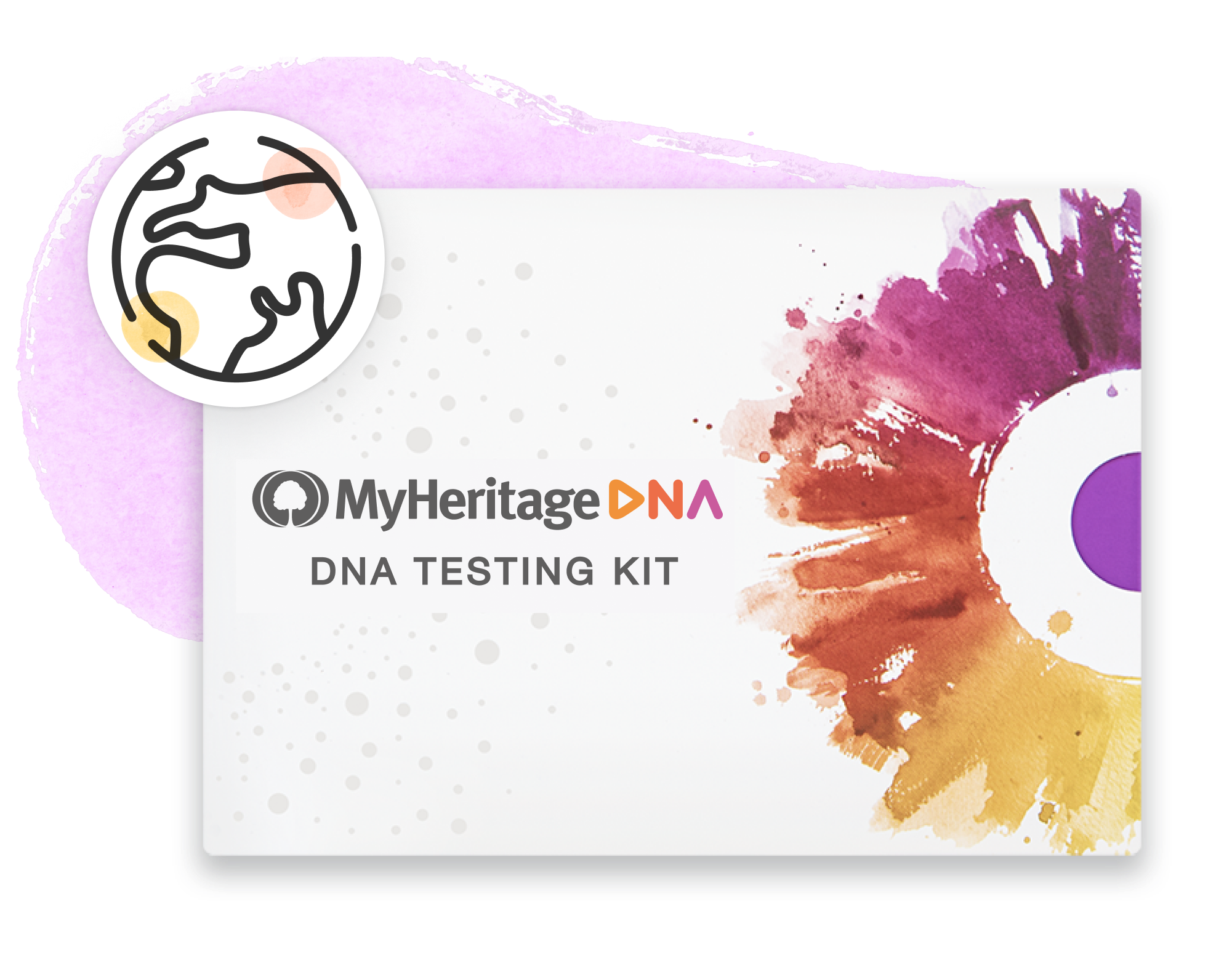
The DNA match list is a list of people who share a certain amount of DNA with you, that you receive as part of your DNA test results.
Contacting DNA matches is the process of reaching out to those individuals who share significant segments of DNA with you. The purpose of this communication is to establish connections, explore potential shared ancestry, and exchange genealogical information. Contacting DNA matches is a crucial step in genetic genealogy.
However, reaching out to matches can sometimes feel intimidating and it is not without challenges on both sides. It’s important to maintain the balance between genuine interest and respecting personal boundaries, the desire to share and the need for privacy, and more.
When reaching out to matches, you should consider both the technical part of what words or phrases to use and the human aspect, including the state of mind, emotions, and needs of the person we are writing to.
Research your ancestors on MyHeritage
Preparing to contact a DNA match
Understand the platform
Different DNA testing companies offer native messaging systems while others provide email addresses for direct contact. Ancestry, 23andMe, MyHeritage, and LivingDNA utilize proprietary messaging systems, whereas FamilyTreeDNA and GEDMatch offer email addresses provided by the contacts.
Fish in all ponds
Test or upload your DNA to view matches on all platforms. Some companies such as Ancestry and 23andMe will only allow access to their DNA database if you test with them. Other companies will allow uploads, such as MyHeritage, FTDNA, LivingDNA, and GedMatch, a third-party DNA site.
Check for matches across platforms
Make note of matches you find across platforms. Having more than one way to reach out can benefit you along the way. When a DNA match is found on more than one platform, you gain an extra line of communication.
Consider your matches carefully
Filter your matches on all platforms and make lists on a spreadsheet according to:
- The amount of DNA they share with you on each platform.
- Matches with and without trees.
- Matches with familiar surnames from family research.
- Matches you can attribute to either side of your family.
Use these lists to prioritize your matches, for example: matches that share a large amount of DNA with you – out of those who have trees – that you know which side of the family they are from.
Try various combinations according to the information that will best serve your interests.
No tree does not equal nothing
Some people are private and hesitant about sharing any information they have about their family online. In addition, they might have no tree on the platform you found them on, but have an extensive tree on a different platform or private tree building software.
Check social media
Once you have gathered all the information you can find about your match from across the DNA testing companies' platforms, try searching for the match through the various social platforms: Facebook, Instagram, LinkedIn, Twitter and others.
Keep this information in case you receive no response through the messaging system.
It is recommended to try the testing company's messaging system first. Contacting people through social media might feel intrusive. However, at times that might be your last resort.
Writing the message
Introduction
Break the ice with a warm and friendly greeting. Imagine meeting a person for the first time. "Smile" while you write and be kind.
Don't be "anonymous"
Introduce yourself. State your full name, where you are from, and in case you are contacting this match on behalf of your family member or a client, state that clearly to avoid confusion. Sign off with your full name and offer an email address for direct communication.
Tailor your messages
Make sure each message is customized for the match you are writing or referring to. You may, for the sake of saving time, create a basic message template with general information applicable to all matches to which you individually add the name of the DNA match and the platform where the shared DNA is located. It’s especially recommended to mention where you found them when using the match’s email rather than the testing company's platform.
Respect their privacy
Respect the privacy of your family members as well as your clients. If you are contacting them on behalf of a family member or client, make sure you know what information they are or are not comfortable sharing with other matches. Make sure you know how they want to be presented.
If you are contacting the match on your own behalf, think about how you want to present yourself.
Keep it short. Don't overwhelm your contact. Share some background and why you're interested in genealogy. Don't spill the story of a long-life search.
Let your match know a bit about you too! It helps to build trust and rapport.
Keep it focused
Your goal is to receive a response. Keep your messages short, friendly, and clear. Try to avoid slang, or complicated professional terminology; you never know who is on the other side, and if it is someone that is new to the field of genetic genealogy, you don't want to scare them off.
Managing multiple kits
If you manage more than one kit, assume your match does the same. Make sure you state clearly which two matches you are referring to. State the name of the person who tested on your side (as it is entered on the platform you are communicating on) as well as the name of the person who matches. The person receiving your message might also be managing more than one kit and might not take the time to participate in a guessing game.
Collaboration and team spirit are key
Genealogy research often makes progress through give and take. Offer your assistance if you can, such as information that might help your match make the extra step towards breaking whatever brick wall they might be facing. Offer to team up in your search for shared ancestors.
Consider offering a detailed list of surnames or a link to your tree if applicable.
Stay positive
Maintain a positive and cheerful tone in your communication, especially if you are contacting them for the second time. Even in a text format, your positive spirit and smile are "seen".[1]
Provide short and simple action items
Make it easy for your match to reply by giving them a simple task. Consider requesting one of the following:
- Access to their tree
- Surnames of direct ancestors
- Names of grandparents or great-grandparents
Or even just ask if they are willing to cooperate and join forces to investigate your connection further.
The three P's
- Patience: Give people time to process your message. They may take longer to write the message you are waiting for.
- Persistence: You never really know why matches did not reply. Don't assume they do not care or don't want to write back; maybe they just missed your message. Don't be afraid to reach out again.
- Perseverance: Don't be discouraged by non-responses and continue reaching out to other matches. Each interaction is an opportunity for discovery; remain proactive regardless of initial setbacks.
Contacting DNA matches is a dynamic process that requires adaptability, empathy, perseverance and trust. It's an art form you can master. Consider human nature, complexity of relationships in a family, privacy, and boundaries, and maintain a positive mind and spirit. Every connection is an opportunity for both sides to gain a deeper understanding of family history.
Remember, behind every match there is a person with feelings, hopes, aspirations, uncertainty, doubt, and any other human emotion, just like you. Handle with care.
Follow these strategies to achieve meaningful communication and connection. Every success brings you a step closer to your goal, whether they are giant leaps or baby steps.
See also
Explore more about how to contact DNA matches
- Contacting Other MyHeritage Users: Instructions & Tips on MyHeritage Knowledge Base.
- Approaching and Connecting with Your DNA Matches on Family Legacy Webinars.


